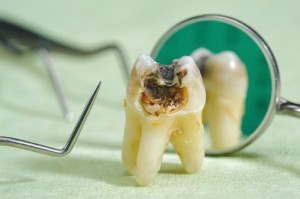What Dentistry from the Middle Ages Can Teach Us
Medieval dentists understood some of the principles of effective preventative dental care if not the science behind them.

Giovanni de Arcoli, a professor of medicine and surgery in Bologna and Padua, recorded 10 precepts for preventative dental care, 5 of which turned out to be right on the money:
- Everything must be avoided which may produce vomiting. Stomach acids can erode tooth enamel over time, as has been seen in recent times with bulimic patients.
- Sweet and viscous food must not be partaken of. Sticky, sugary foods can get deep into crevices in teeth, feeding bacteria that cause tooth decay.
- Hard things must not be broken with the teeth. Today we seldom use our teeth as tools but we still need to remember that teeth can chip or break if misused.
- The teeth must be cleaned at once after every meal. In Arcoli’s day, this meant removing bits of food with a twig or toothpick and rinsing with some kind of spice mixture.
- The teeth must be rubbed with suitable dentifrices before bed or before breakfast. Without toothpaste, people of the Middle Ages rubbed their teeth with various oils or spices of dubious effectiveness. But the principle of rubbing teeth to remove plaque and to stimulate the gums was sound.
Arcoli is also famous as the first known author to recommend filling decayed teeth with gold to preserve and protect them. Today of course we have non-metallic filling materials that are both more subtle and more durable than gold.
There is evidence that some of Arcoli’s advice was heeded by his contemporaries, at least those that were educated. A recent article in the British Dental Journal described the examination of the teeth of Richard III, a famous English king who died in 1485.
Richard’s teeth showed more evidence of tooth decay than the average medieval peasant’s, most likely due to the fact that he ate like a king, enjoying a variety of carbs and sugars that the poor would not have been able to access. However, it was apparent that he had had dental treatment because the mineralized tartar on his teeth was not evenly deposited on all adjacent teeth. Instead, some teeth showed less build up, as if he had cleaned them as Arcoli advised. Richard’s jaw also showed evidence of tooth extraction, most likely to remove decayed teeth.
What is really interesting about dentistry from the Middle Ages is the fact that it shows that the principles of preventative dentistry have been around for centuries. The two main causes of tooth loss, tooth decay and gum disease, are entirely preventable—always have been and always will be. You too can enjoy the benefits of preventative dental care by visiting California Dental Group today.




